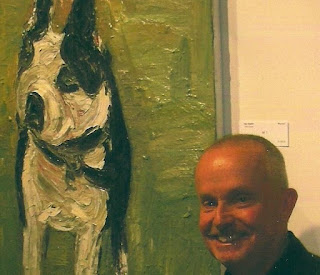Gentrification, Artwashing, & The Creative Placemaking Hustle
This particular series of #Groundtruthings was prompted by an article in the San Diego Union Tribune “LA-style studios crop up in East Village, as not-so-broke artists collect at The Ratner “ by Brittany Meiling. In the article Brittany characterizes the rising rents and displacement of local residents “in a once-derelict neighborhood (best known for housing cash-strapped artists)” as “out with the boho artists, in with the cash-flow-positive ones”. “LA-style” that is, she and the developers say they are making room for an influx of “Los Angeles-style production companies”. The big idea in the I.D.E.A district and Makers Quarter, is “to attract workers and companies to the neighborhood, with a focus on creative technology.” Their “idea” isn’t a very good one (cash-flow negative), and is based simply on UCSD’s plans to build satellite campuses for its art department in the area. Brittany and these developers actually describe digital media in their hype, as “a new media” in a “tech-forward neighborhood” while distinguishing painters and sculptors as “more traditional artists”. This bankrupt perception is what really resonated with me. The uncultivated and naive impression of contemporary visual art and artists that is echoed throughout America’s finest soccer city, San Diego.
There isn’t anything confusing about what’s happening in the East Village, Barrio Logan, Liberty Station, and all over San Diego. It is clearly planned gentrification by developers with no long term commitments to the areas in which they build. All one has to do is take a walk in the East Village to see the massive developments, sky cranes, “Incorporated” murals and decorated electrical boxes. Even the kitschy leasing signs on these new developments scream gentrification. The insignificant, art washing mural commissions and subsidized sites such as SILO (a dirt lot with street art and events), are tactlessly disguised as creative place-making. They hope to lure Silicone Valley types with “traditional art” and the idea of a booming creative life-style. Since there is no actual creative industry, the outcome is more likely to excite Ohio trust fund baby transplants, with the prospect of living the sexy, California dream of sunshine, beach, babes, beer, and ball. A high price to pay for an endless summer in an overpriced box with paper thin walls.
In terms of the homeless, the city has been trying to move them out of sight for decades. Now, there’s too many to hide the problem, which is in large part due to over development. The rate of development alone, which is a prime component for displacement, demonstrates the bottom line is far from community building. It’s also common knowledge that individual and corporate investors are buying up properties and flipping them. On top of it all, we have disrespectful, uninformed, articles like this that degrade and condemn the visual artist as a kind of vagrant, or train jumping hobo living in the past and afraid of change, is a slap in the face in addition to the rising costs. Visual artists are always facing change and hardly expect a hand out from developers or the city. Especially here in Soccer City, where the priorities are everything but the arts.
My disgust over this vacuous article isn’t simply about the outright gentrification in the region or the justification of it. Though, it is pretty sickening, especially the idea of selling lifestyle, such as the arts, to creative industries yet to be established. Artists are used and taken advantage everywhere. Even in the entertainment/commercial genre. My central issue is that this article hits at the core of why San Diego is unable to sustain a viable market for contemporary art and artists. What’s even worse is the artists, galleries, and art organizations here, seem to fall prey to this ignorant regional cast of mind.







SO damn True! I've seen ALL of this happening since the late 80's-early 90's
ReplyDelete